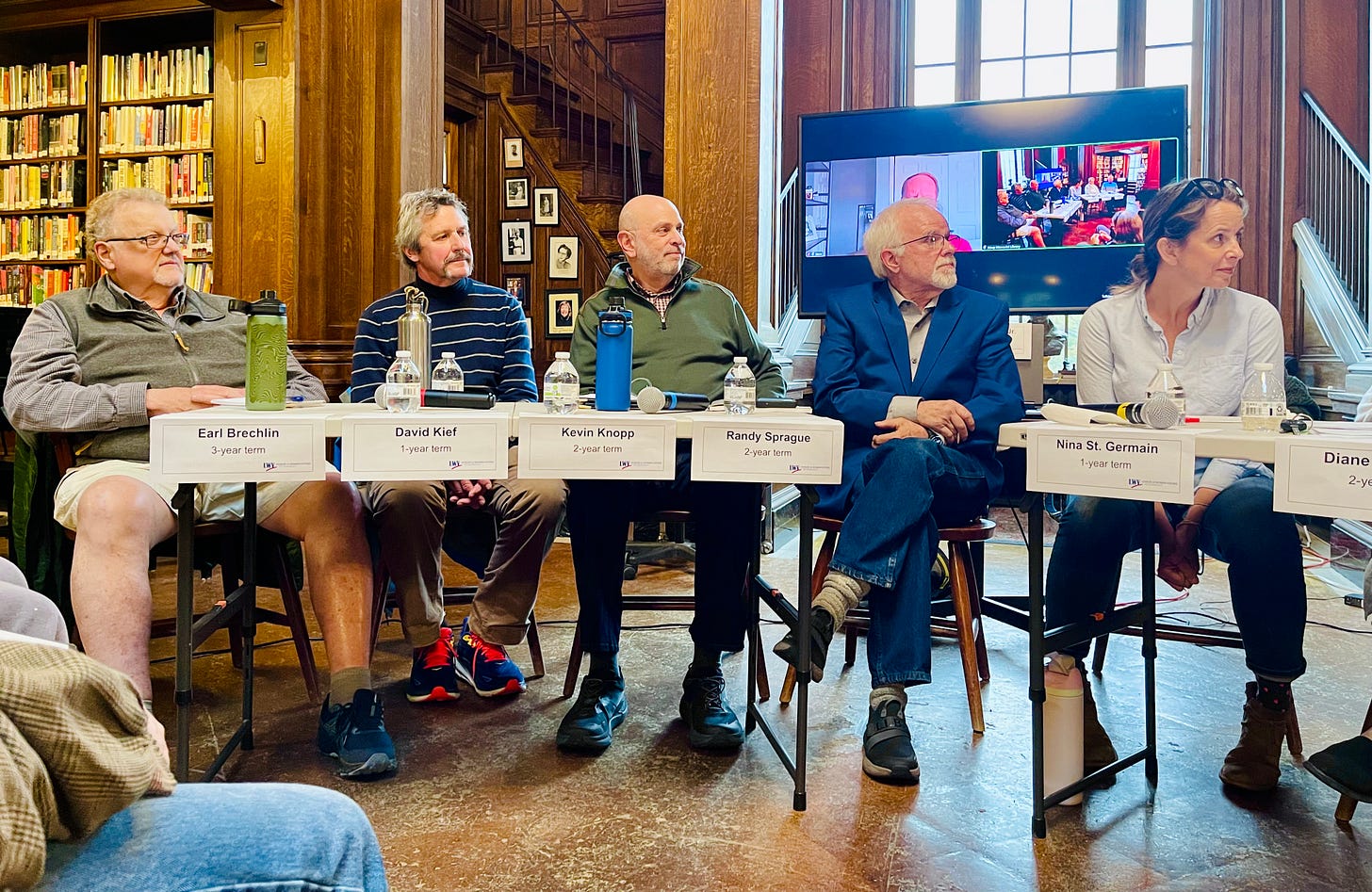Dialogue and Pacing – Rhythm, Tension, and Silence
Talk to Me: Writing Dialogue That Works

I normally send these out on Tuesdays and it is now . . . . Well, it’s Wednesday, a very early morning Wednesday as I write this actually.
Apologies.
Life in local newspaper world was super busy. One of the reasons for that was because our town had a forum for the eight town council candidates and I have to tell you that listening to eight people answer the same question teaches you a lot about the sound of voice and even the pacing of voice.
That’s what this next post is about.
Not the council candidates. Do not worry!
But about rhythm, tension, and pacing in dialogue.
So, yeah, welcome back to Talk to Me: Writing Dialogue That Works.
So far, we’ve covered the purpose of dialogue, voice, and subtext.
Now let’s look at how dialogue shapes the pace of a scene. Dialogue isn’t just what’s said—it’s how what’s being said actually unfolds. Fast, slow, tense, relaxed—it all comes down to rhythm.
How Dialogue Affects Pacing
Just like paragraph length and sentence structure, dialogue controls how quickly readers move through a scene.
Want a fight or chase to feel snappy and urgent? Keep the dialogue clipped and sparse.
Want a romantic moment to linger? Let your characters take their time.
Short exchanges = speed
Longer, introspective lines = slow burn
“You coming?”
“I don’t know.”
“We don’t have time.”
“Then go without me.”
Fast, tense, immediate.
“When I think about leaving, it doesn’t feel real. It’s like I’m watching someone else pack my life into boxes.”
“You don’t have to explain. But I wish you would.”
Slower, more emotional. The rhythm matches the mood.
What I learned at the debate is also this: in general if people talk for two minutes all by themselves to answer a question? It really really slows the pace down.
Here … I’ll make one up. Do not feel like you have to read through it, but if you just look at it on the page? You’ll see how much even this post slows down.
“I think that building housing is incredibly important but what none of us are talking about is how in other Maine communities changing zones and making it so that there is higher density so that more than one structure can be built on a lot that previously only allowed one structure or even minimizing setbacks hasn’t helped or encouraged housing to be built at the rate that it’s needed in other towns. That’s because it isn’t just about the zoning. It might not even be about the zoning. It’s also about the cost of goods to build homes and because it’s also about finding labor to build those homes in an expensive area where many laborers can’t afford to live—not just because of escalating home prices but because of the escalating property taxes that go with it and then of course there is the zombie hamster problem.”
Everything slowed down, right?
Some things you learn about dialogue as a reporter covering local government are that:
Some people talk in soundbites as often as they can.
Some people never talk in a straight line.
Some people forget about verbs.
Some people try to say everything they know as quickly as they can say it.
Some people only talk in abstractions.
People say ‘um’ a lot. I mean a ton. I mean constantly. You don’t usually want to do that in your story.
Hint #1 Use Silence to Build Tension
Dialogue isn’t just about the words—pauses matter too. Silence can speak volumes, especially when a character hesitates before answering or doesn’t answer at all.
“Say something.”
He stood there.
“Please.”
That beat of silence? That’s the moment.
Hint #2 Beats and Interruptions
Physical beats (actions between lines of dialogue) can control tempo. So can interruptions.
“I didn’t mean to—”
“You never mean to.”
Hint #3 How to Use the Punctuation
Use dashes for interruptions, ellipses for hesitations, and no tag at all to create breathless urgency.
“I didn’t mean to—”
“I didn’t mean to . . . ”
Rather than
“I didn’t mean to do that,” she said.
Doesn’t feel quite as urgent (em-dash) or quite as hesitant (ellipses), right?
Hint #4 Trimming Dialogue for Tighter Pacing
When you’re revising, read your scenes aloud or have a computer AI voice do that.
Things to look at:
Do your characters talk in full sentences when they’d realistically be breathless, scared, or angry?
Do they over-explain?
Could a three-line speech become one sharp line?
Are you addicted to ellipses?
Tightening dialogue makes it punchier. But don’t cut so much that your characters lose depth or voice.
Hopefully Cool Craft Exercise: The Pacing Experiment
Write a 300–500 word scene where two characters are in danger—real or emotional (e.g., being chased, a confrontation, a confession).
Version 1: Use rapid, clipped dialogue with short beats.
Version 2: Stretch the same scene with longer lines, pauses, and internal tension.
Ask yourself:
Which version feels more intense?
Which reveals more about the characters?
Where do you feel the tension build?
This will help you get a feel for how structure and rhythm shape your story’s momentum.
Coming Up Next…
In our most likely final post, we’ll focus on revising dialogue—how to spot flat lines, trim filler, and polish speech so that every word shines.
How do you use pacing in your dialogue? I’d love to hear how your characters slow down or speed up the scene.
PLACE TO SUBMIT
Salamander Fiction Prize
Eligibility: All writers
Prize: $1,000 + publication
Entry Fee: $20
Deadline: June 1, 2025
RANDOM PLEA FOR SUPPORT
If you think all the content I write over the year is worth $5 a month and you can afford to send that along? That is super awesome and kind. Thank you. If not, no worries! Just stay around and read the free posts, okay? And try not to resent me for the paid ones.
I send WRITE BETTER NOW emails twice a week. If you would also like to receive them, join the other super-cool, super-smart people who love it today.
*My LIVING HAPPY posts also come twice a week if you sign up for this, too, which you should.
That’s me trying to sell. I am terrible at it, I know.







Very important topic, and one that I often neglect. Thx!